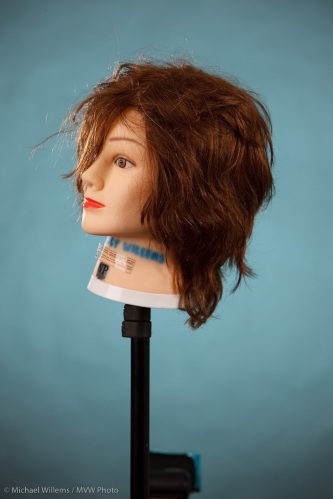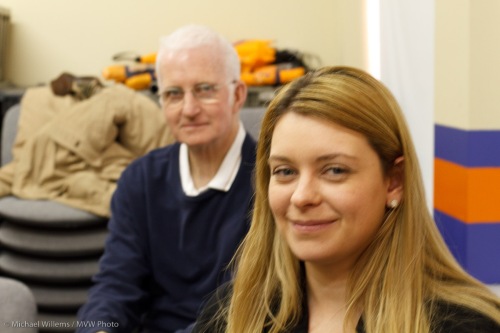A few words to get you started on studio portrait setups.
When you are shooting in a “studio” (i.e. controlled) setting, your camera settings might be, as I recently pointed:
- Camera on Manual
- 100 ISO
- Auto ISO disabled
- 1/125th sec
- f/8
- “Flash” white balance
Why as small as f/8?
Because lower aperture numbers than 5.6 can give you too selective a depth of field; and with most lenses, higher numbers than f/8 create diffraction, meaning slight blurriness. If you like sharp, stick to f/8 or perhaps f/5.6.
You also use f/8 or similar because studio lights are powerful. (Someone the other day searched for “how to shoot wide open with studio light” – often, the lights are so bright even on their lowest settings that the only way to do that is to use a neutral density filter on your lens).
And lenses?
For portraits, I use 50-200mm. Smaller focal length (like 50-70 on a full frame camera) makes a woman’s body smaller (if I shoot at head height). Larger makes the nose smaller, but can make the body slightly bigger. I.e. larger gives you no distortion, but sometimes ever-so-slight distortion is exactly what you want. My favourites are:
- 24-70 2.8L
- 70-200 2.8L IS
- 50mm f/1.4 (for use on the 7D, or for body shots on the 1D Mark IV or 1Ds Mark III)
- 35mm f/1.4 (for environmental portraits)
- 100 mm f/2.8 macro (yes, a macro lens is a great portrait lens)
But you can keep it simple! A Canon Digital Rebel or Nikon D90 with a 50mm f/1.8 lens, for instance, will allow you to take great razor-sharp studio portraits. It’s all about the light!














